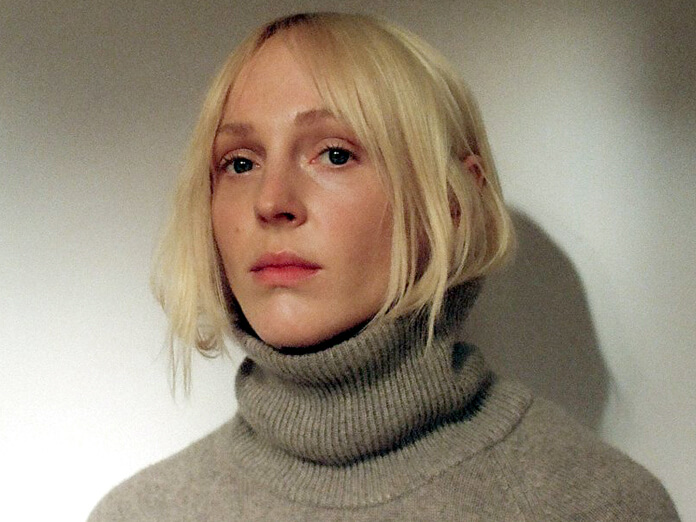The Hobbledehoy loves Laura Marling.
On this video, Marling teams up with pioneering strings-based collective the 12 Ensemble performing “Goodbye England” from her 2020 album, Song for Our Daughter.
The Hobbledehoy loves Laura Marling.
On this video, Marling teams up with pioneering strings-based collective the 12 Ensemble performing “Goodbye England” from her 2020 album, Song for Our Daughter.
The Hobbledehoy loves Laura Marling.
On this video, Marling teams up with pioneering strings-based collective the 12 Ensemble performing “Goodbye England” from her 2020 album, Song for Our Daughter.
From 2010, friends Johnny Flynn and Laura Marling performed this duet. So very lovely.
In 2011, I watched a flock of British folk luminaries, led by US singer-songwriter Anaïs Mitchell, perform Mitchell’s folk opera Hadestown at London’s Union Chapel. Ten years on, Hadestown has been a hit at the National Theatre and on Broadway and has led the way for an increasing number of songwriters to merge folk and musical theatre.
“Hadestown was inspiring to quite a lot of us,” says Maz O’Connor, who is among the singer-songwriters to make that leap. “It showed that you don’t have to identify as a music-theatre composer, you can just be a songwriter and work in a longer form. It made me realise I might already have the tools to do it.”
O’Connor performed in the RSC’s 2013 staging of As You Like It, which featured a score by Laura Marling, and in the folk-inspired “play with songs” Narvik in 2017. Now, she is developing her first musical, The Wife of Michael Cleary, based on the true story of Irish dressmaker Bridget Cleary, killed in 1895 by her husband who believed she had been abducted by fairies and replaced with a changeling. “There’s a lot of folk songs where women get murdered by their lovers, but it’s quite difficult to find a context to sing them in,” says O’Connor. “This piece allows me to have an opportunity to explore and contextualise it, rather than just sing a murder ballad.” The musical, she says, will suggest “how nationalism, folklore, superstition, religion and patriarchy all work together to create violence against women”.

Finn Anderson’s folk musical Islander was a hit at the Edinburgh fringe in 2019 and has since been released as an album and adapted for BBC Radio 4. A two-hander about a girl whose life is changed when a mysterious stranger washes up on the shore of her island home, it is steeped in folk traditions of both music and storytelling. It also feels very contemporary, the songs built up in layers of beautiful vocal harmonies using live looping. “I’m always interested in innovation versus tradition,” Anderson tells me. “Traditional music wants to be alive, and wants to always be breathing and living.” Continue reading

From the 2008 debut to 2020’s acclaimed Song For Our Daughter
A follow-up to this spring’s Song For Our Daughter may be a little way off, explains Laura Marling. “If I’m on the road for an extended period of time, I tend to have written an album by the time I get back,” she says. “Obviously that’s been completely scuppered by coronavirus. When I’m at home I play the guitar but I don’t really feel the need to write – I mean, I’m at home, I’ve got nothing to miss.”
For now, though, there’s her extensive back catalogue to enjoy, and it’s this body of work that the songwriter is taking us through here; from her first studio experiences to orchestral arrangements for three bass guitars, via her own personal highpoint, 2013’s Once I Was An Eagle: “It’s just one of those things, maybe a once-in-a-lifetime thing.”
Along the way, Marling ponders her time in Los Angeles, being one half of Lump and her mission as a solo artist today. “I’m not trying to reinvent the wheel,” she says. “As much as I love Blake Mills’ production on Semper Femina – and I would take that any day – really it’s about whether I’m a good songwriter. That’s all I’m really interested in.”
TOM PINNOCK
_________________
ALAS, I CANNOT SWIM
VIRGIN, 2008
Marling’s debut, produced by Noah & The Whale’s Charlie Fink
We had four weeks at Eastcote Studios, two weeks doing my record and then a further two weeks back-to-back doing the Noah & The Whale record. We laid down the bass, drums, guitar and vocal all at once, and then we did overdubs – this is the same for all albums I’ve done, pretty much. My dad ran a recording studio which shut down when I was quite small, but I remember growing up around all of that outboard gear at home. So I guess I was slightly more familiar with the studio than the average 17-year-old, but still it was my first proper session. These were all my first songs, written from the age of 16-17. There was a batch of songs before that that were on an EP, “London Town” – I didn’t like them very much by the time I got to making this. I haven’t listened to this for a long while, I very rarely play any of those songs live, so it’s a bit of a distant memory to me now. And the production was very much of the time I guess, that ‘new folk’ world – glockenspiels and banjos and whatever – which is good, that’s what it was supposed to be then. I don’t really think of this as part of my catalogue. Continue reading